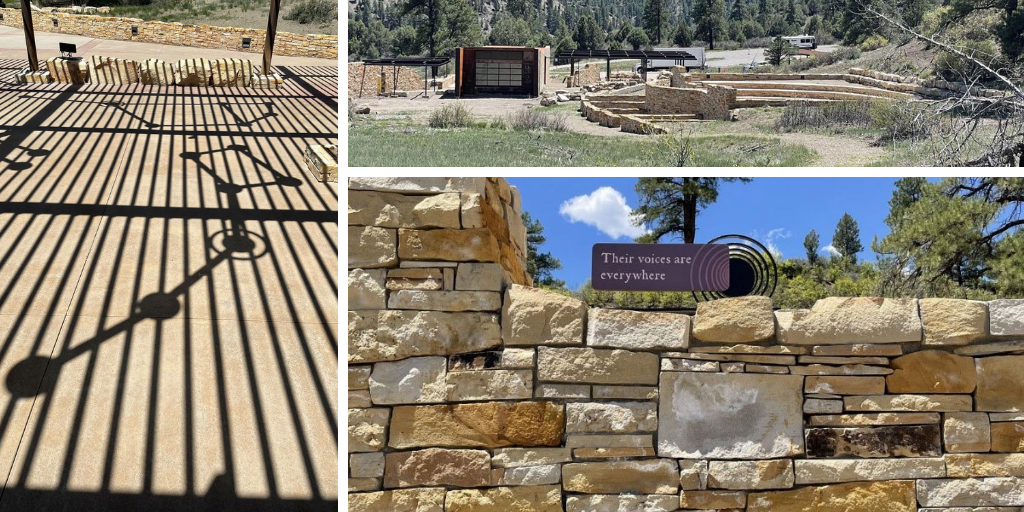San Juan Partners with 26 Native American Tribes
 In 2012, Chimney Rock was designated a National Monument by the USDA Forest Service. Since the designation, the San Juan NF has partnered with 26 Native American Tribes and Pueblos to design, construct, and bless site amenities. More than 18,000 visitors each year will have the opportunity to discover the history, the paths, and the significance of this area and what it meant to the ancient cultures and what it still means to the Native American Community today.
In 2012, Chimney Rock was designated a National Monument by the USDA Forest Service. Since the designation, the San Juan NF has partnered with 26 Native American Tribes and Pueblos to design, construct, and bless site amenities. More than 18,000 visitors each year will have the opportunity to discover the history, the paths, and the significance of this area and what it meant to the ancient cultures and what it still means to the Native American Community today.
The San Juan National Forest (NF) covers an area from east to west of more than 120 miles and from north to south of more than 60 miles encompassing an area of over 1.8 million acres of federal lands. It stretches across nine counties in southwestern Colorado, covering most of the southern portion of the San Juan Mountains west of the Continental Divide. The San Juan NF contributes to the economy and quality of life in southwest Colorado by providing recreation, scenic beauty, timber products, energy, clean air, rangeland, wildlife habitat, and a major source of clean water in the Colorado River Basin.
The San Juan NF are neighbors to nearly 20 percent of Colorado’s Native American population. The San Juan NF has historical significance to 26 current sovereign tribal nations, and roots to 11 ancestral tribes and pueblos. At the center of this pathway lies Chimney Rock. Chimney Rock is natural spire shaped monolith that was and is a significant astroarcheo-logical feature to the Native Americans. At the base of Chimney Rock, several ancient dwellings were built, and other features that still bewilder the nation’s leading scholars of indigenous people.
In 2012, Chimney Rock was designated a National Monument by the USDA Forest Service. Since the designation, the San Juan NF has partnered with 26 Native American Tribes and Pueblos to design, construct, and bless site amenities so 18,000 visitors each year can learn about the history, the paths, and significance this area meant to the ancient cultures and what it still means to the Native American Community today. At the end of this summer, the site will include a visitor center, a large stone amphitheater, shade structures and educational interpretive panels along with walkways and paths. Much of the construction, including the intricate stonework, was constructed by Native Americans in conjunction with Forest personnel, who were instrumental in leading and overseeing construction. The Center for Design and Interpretation (CDI) led the design and interpretive effort by providing design oversight, developing an interpretive master plan, facilitating design of interpretive exhibits, and supporting construction efforts on this important site which holds unique spiritual, historical, and scientific resources.
The designation of the site as a national monument, and the construction of the amenities to honor the history of the indigenous people shows how important partnerships, neighbor relations, and connecting with our communities is to our National Forests. Partnerships gives us the opportunity to accomplish a lot of work, but also affords us the ability to give back and to honor a culture that is gone, but never forgotten. Naashnish ta-bilh (working together) is built into the cultures of generations past, generation present, and generations to come.

